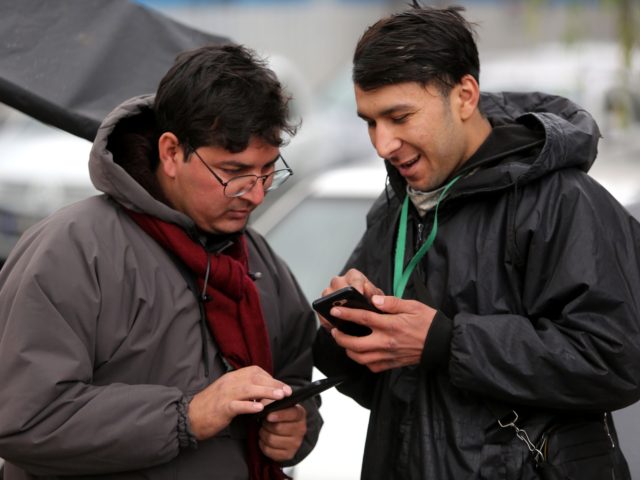The Islamist regime in Iran reportedly shut down a mobile data network in its southeastern province of Sistan and Baluchestan this week in response to ongoing protests against the alleged killing of local fuel smugglers by Iranian armed forces.
NetBlocks, a worldwide internet access monitor, confirmed a new disruption to internet connectivity in Sistan and Baluchestan province beginning late Saturday, February 27. The monitor confirmed the internet cut-off following days of unverified reports by human rights groups describing “localized regional network disruptions” amid the protests, which began on February 22.
Sistan and Baluchestan is a poor, remote province where nearly 96 percent of the population accesses the internet through their mobile phones. The government’s decision to shut down the province’s mobile data network as opposed to the landline internet connection suggests a targeted action, according to the British human rights organization Article 19.
“This targeted shutdown was very intentional because they knew the realities of this province,” Mahsa Alimardani, a researcher at Article 19, told the Associated Press on February 28.
Sistan and Baluchestan is one of Iran’s least developed regions. Located along Iran’s border with Pakistan and Afghanistan, the province is home to a largely Sunni population. The community makes up a minority within Iran’s greater Shiite majority population. Tensions between the province and the rest of Iran have caused several Sunni militant groups to crop up in Sistan and Baluchestan over the past several years. Many of the militant groups have demanded more regional autonomy from Iran and some have led a low-level violent insurgency to expand their power in recent years.
Sistan and Baluchestan lies along a major drug and fuel trafficking route; residents of the province routinely transport drugs and small amounts of diesel fuel largely from Iran to Pakistan. Diesel fuel is highly subsidized in Iran and provides a key source of income for smugglers in the otherwise impoverished region.
Members of Iran’s Islamic Revolutionary Guards (IRGC) allegedly shot and wounded several fuel smugglers in the regional city of Saravan on February 22, resulting in at least two deaths. The incident prompted violent protests to break out across the city and surrounding area.
A separate group of fuel smugglers tried to attack a police station in Saravanv shortly after the February 22 shooting, prompting Iranian border guards to open fire on the smugglers, wounding several. The next day a mob of people stormed a district governor’s office in southeastern Iran.
“Videos showed the men screaming ‘Allahu Akbar’ as they punched through glass doors, yanked out air-conditioning units and smashed office furniture against the walls. Once inside, protesters waded through piles of overturned chairs and shattered glass, throwing objects all over the place,” the Associated Press reported on February 23, citing video footage shared via social media.
The protests had spread across Sistan and Baluchestan and continued into their sixth consecutive day on February 27, according to Iranian dissidents. Residents of Zahedan claimed authorities had imposed martial law over the city as of Saturday.
“Security forces are filling the streets and the regime has brought reinforcements from neighboring cities and towns. Some of the units have been brought in from the neighboring Kerman province,” the People’s Mojahedin Organization of Iran (PMOI), Iran’s largest dissident organization, reported on February 27.
“Military helicopters continue to fly over many cities, including Zahedan and Ghaleh Bid,” the PMOI reported.

COMMENTS
Please let us know if you're having issues with commenting.